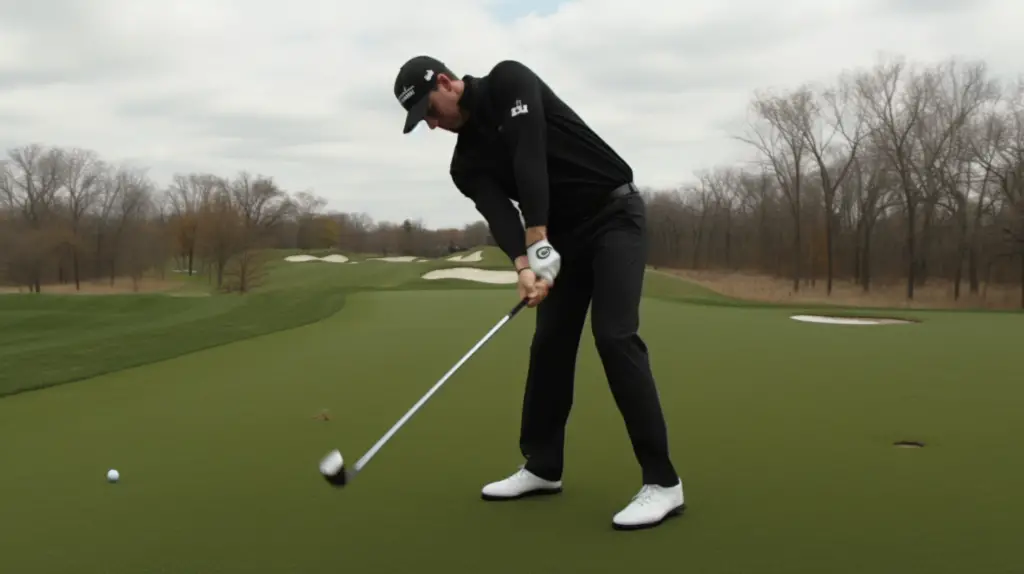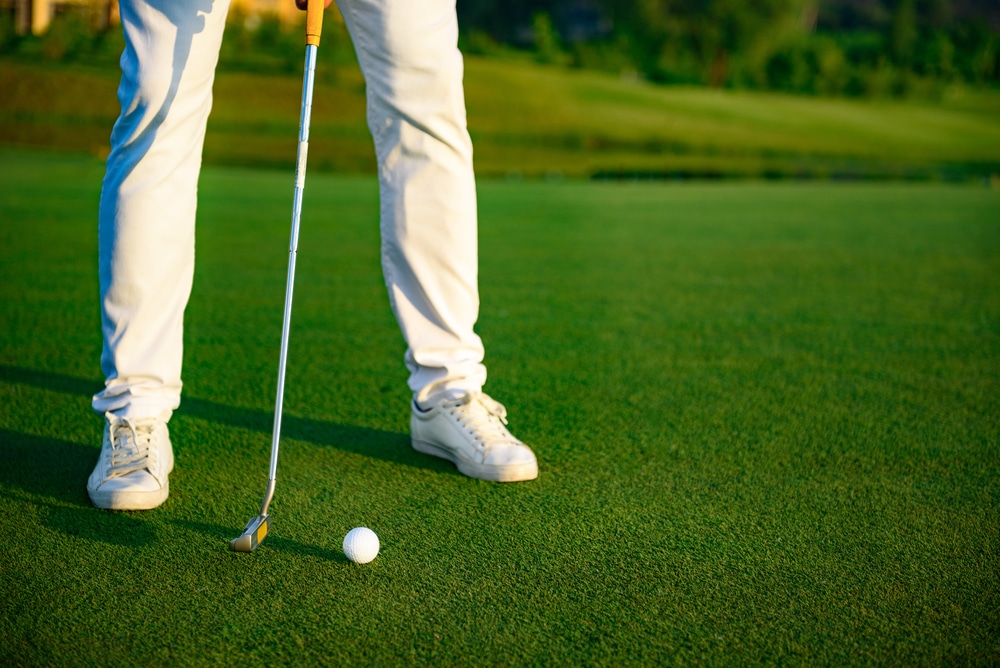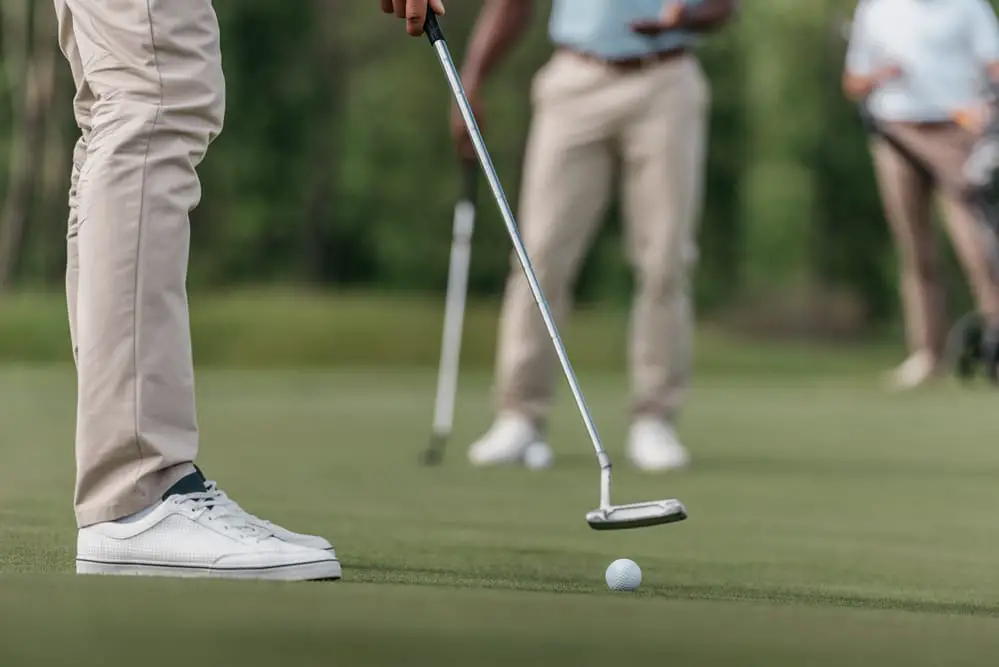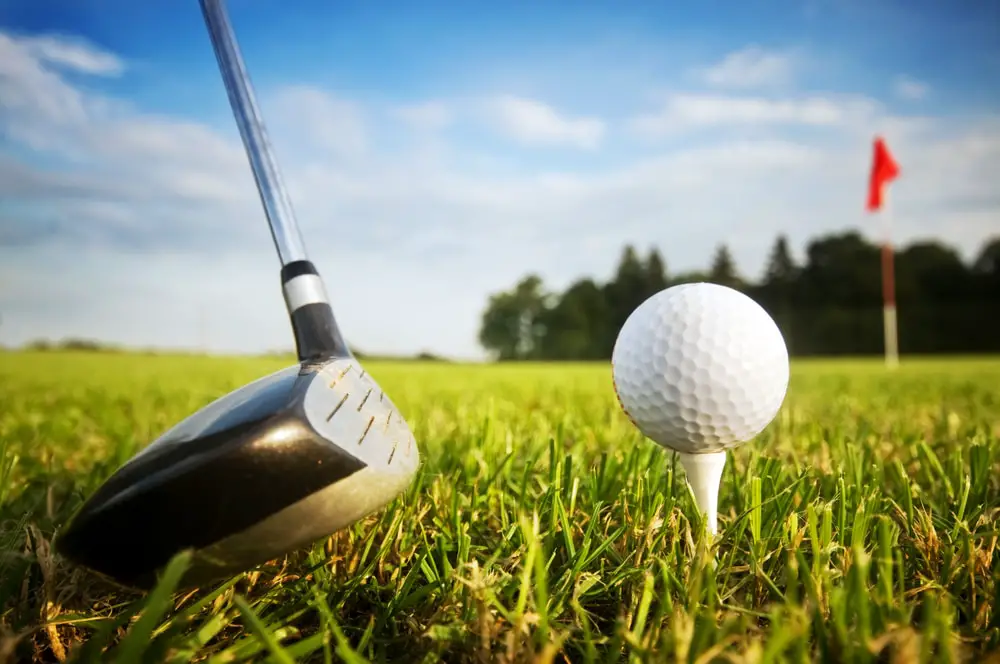Last Updated on November 10, 2023
Golf clubs come in all shapes and sizes, but did you know that the amount of bounce on a golf club can have an impact on your game? That’s right – with the proper knowledge, understanding how to use bounce effectively could be just what you need to improve your swing. But before we dive into using this tool for success, let’s first understand exactly what “bounce” means for golf clubs. Let’s take a closer look at bounce on a golf club so that you can make sure you’re making the most out of every shot.
Table of Contents:
- What Is Bounce on a Golf Club?
- How to Choose the Right Amount of Bounce for Your Game?
- Frequently Asked Questions
- Conclusion
What Is Bounce on a Golf Club?
Bounce is a term used to describe the angle of the sole on a golf club. The bounce angle determines how much of the club head will be in contact with the ground when you swing, and it can have an impact on your shot accuracy and distance.
Bounce is measured in degrees, and it refers to how much of the sole (the flat part at the bottom) sits off the ground when you address a ball. A higher degree of bounce means more of your clubhead will remain off the ground during your swing, while a lower degree means less contact with turf or sand.
There are three primary types of bounce available for golf clubs: low, mid-low and high. Low bounce is typically recommended for those who hit down sharply on their shots as well as players in firm conditions such as hardpan fairways or tight lies in roughs, whereas mid-low works best for the majority of players. High bounce may be beneficial to those who sweep their shots through impact or play from softer surfaces like bunkers or wet grasses.
How to Choose the Right Amount of Bounce for Your Game?

When selecting a golf club with the right amount of bounce for your game, there are several factors to consider. These include the type of turf you typically play on (hard or soft), swing speed, attack angle, and playing style. For instance, if you have a slower swing speed and tend to hit down more aggressively than average players do, then higher-bounce clubs may be better suited for you as they can help prevent digging too deep into softer turf surfaces while still allowing enough spin control on harder surfaces.
Low-handicap players typically prefer lower-bounce wedges, as they provide maximum control over their shots in any condition. Mid-handicap players often opt for medium-bounce wedges, which offer good performance across different types of terrain without sacrificing too much control. High handicappers usually go with higher-bounce wedges due to the forgiveness they provide off uneven lies or hardpan conditions where there is not enough room for them to take full swings without hitting behind or thinning out their shots due to a lack of power generation capabilities caused by slow swing speeds or poor technique respectively.
When choosing which type of wedge is best suited for your game, it’s important that you experiment with different amounts until finding one that feels comfortable in hand and provides desired performance results during practice sessions at home before taking it out onto the course. This ensures there are no surprises during actual rounds. Additionally, always keep in mind what kind of turf courses tend to play most often since this will dictate what kind of bounces you need to look further into investing to maximise the potential within your own game regardless of the skill level currently possessed.
Frequently Asked Questions
Is high bounce more forgiving?
High bounce is generally more forgiving than low bounce, as it allows the club to glide through turf and sand with less resistance. This can help players who struggle with their accuracy or consistency when striking the ball, as they are able to make contact with a larger area of the clubface. Additionally, high-bounce wedges can be useful for shots around the green that require a higher trajectory to land softly on the putting surface. Ultimately, whether high or low bounce is more suitable depends on an individual’s swing and playing style.
What bounce should I have on my wedges?
The bounce of your wedges depends on a few factors, such as the type of course you are playing and the kind of shots you want to hit. Generally speaking, if you’re playing on a soft or sandy course, then more bounce is better. This will help prevent the club from digging too deep into the ground and reduce fat shots. On firmer courses with tight lies, less bounce can be beneficial for getting under the ball easier. Ultimately it comes down to personal preference; experiment with different bounces until you find what works best for your game.
Is high or low bounce easier to hit?
It is difficult to definitively answer this question as it depends on the individual golfer’s skill level and swing. Generally, low-bounce golf clubs are easier for higher handicap players to hit because they provide more control when making contact with the ball. Higher handicap players tend to struggle with their swings and can benefit from the extra forgiveness that a lower bounce club provides. On the other hand, experienced golfers may prefer high-bounce clubs due to their ability to help them manipulate shots around obstacles such as bunkers or trees. Ultimately, each golfer should experiment with different types of clubs to find what works best for them.
Is high or low bounce better?
The type of bounce on a golf club can make a difference in how the ball behaves when it is struck. Low-bounce clubs are best for players who have more control over their swing and prefer to play from tight lies or firm turf. High bounce clubs are better suited for those with less control over their swing, as they will help the player get out of difficult lies such as deep rough or soft sand. Ultimately, which type of bounce is better depends on the individual’s playing style and skill level. It is important to experiment with different types of clubs to find what works best for you.
Conclusion
In conclusion, understanding the concept of bounce on a golf club is essential for any golfer looking to improve their game. Knowing how to choose the right amount of bounce for your game and using it effectively in your swing can make all the difference when you’re out on the course. Finally, remember to properly care for your clubs, whether they have high or low bounce, to enhance durability and improve your shot outcomes. With this knowledge under your belt, you should be well-equipped to take full advantage of the benefits that come with having a bounce on a golf club.


